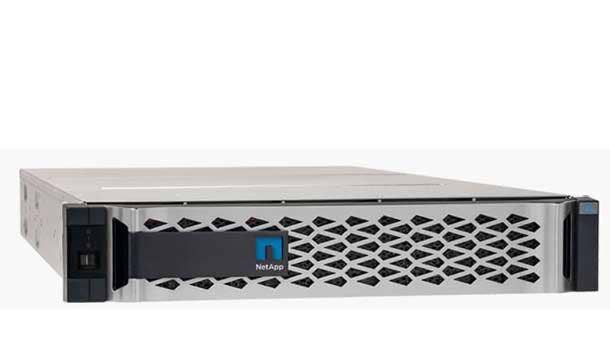5 Keys To Understanding NetApp’s Second-Quarter Financials
‘As I’ve said many times, our public cloud services not only allow us to participate in the rapidly growing cloud market, but they also make us a more strategic data center partner to our enterprise customers, driving share gains in our hybrid cloud business,’ says NetApp CEO George Kurian.

Seeing The Fruits Of Its Investments
NetApp Tuesday reported a strong second fiscal quarter 2022. Revenue for the quarter, which ended Oct. 29, grew by 10-plus percent over that of last year, while income was up strongly. The company also increased its guidance for the full fiscal year 2022.
While sales of the company’s storage products saw one of the highest growth rates, the real story is what NetApp is doing in the cloud. NetApp reported its public cloud annualized revenue run rate is now $388 million, up 80 percent over last year, a number it expects to grow to over $1 billion by fiscal year 2025. A big part of that growth came from NetApp’s storage relationships with Amazon Web Services, Microsoft Azure and Google Cloud Platform, including the adoption of its technology by those cloud providers in some cases.
But it’s not just storage. NetApp is moving fast to become a leading provider of non-storage cloud technology, turning it into a potential leader in the cloud, not just cloud storage.
‘As I’ve said many times, our public cloud services not only allow us to participate in the rapidly growing cloud market, but they also make us a more strategic data center partner to our enterprise customers, driving share gains in our hybrid cloud business,’ NetApp CEO George Kurian told financial analysts Tuesday.
NetApp is rapidly changing into a cloud-centric technology vendor. Here is a detailed look at some of the ways that is happening.

NetApp’s Public Cloud Business Is Booming
NetApp is uniquely positioned to help businesses solve challenges in both modern and traditional applications, on-premises, and in hybrid, multi-cloud environments, Kurian said.
“As I’ve said many times, our public cloud services not only allow us to participate in the rapidly growing cloud market, but they also make us a more strategic data center partner to our enterprise customers, driving share gains in our hybrid cloud business,” he said.
The results were obvious in the second fiscal quarter 2022 financial report. NetApp’s public cloud revenue grew 85 percent over last year, driven by Azure NetApp Files, Cloud Insights and Spot by NetApp, Kurian said. NetApp’s public cloud annualized revenue run rate grew by 80 percent to $388 million, and its public cloud dollar-based net revenue retention rate was a healthy 179 percent.
“During Q2, we advanced our cloud agenda significantly, and we remain confident in our ability to achieve our goal of reaching $1 billion ARR in [fiscal year 2025], with a gross margin profile that is accretive to the corporate average,” he said.

Friends Among The Cloud Players
NetApp has built some very unique relationships with the top three public cloud providers.
During the second fiscal quarter, Amazon Web Services unveiled the general availability of Amazon FSx for NetApp Ontap, which Kurian described as a native, fully managed AWS storage service powered by NetApp’s Ontap storage technology.
“This new first-party product is fully integrated into the AWS console and is sold, supported, run and billed by AWS, making it easy and cost-effective for customers to take advantage of NetApp’s suite of enterprise-grade data services while running in an AWS native experience,” he said.
FSx for NetApp Ontap is currently being used by some customers in pilot programs, he said.
Google Cloud this quarter said NetApp will provide storage infrastructure for its Google Distributed Cloud Hosted, which is Google’s technology for hosting data customer-owned data centers and colocation facilities, Kurian said. Google is also previewing the integration of Google Cloud VMware Engine with NetApp Cloud Volumes Service, which Kurian called a fully managed service for storage and disaster recovery.
Finally, Microsoft this quarter removed the white-listing of Azure NetApp Files, which has been generally available since May 2019.
“Now customers can instantaneously leverage Azure NetApp Files to accelerate the deployment of mission-critical applications to Azure,” Kurian said. “Additionally, we expanded the backup/restore service and cross-region replication capabilities for Azure NetApp Files.”

Not Just Storage Anymore
NetApp’s move to the cloud is quickly expanding beyond storage, starting with NetApp's June 2020 acquisition of Spot, a developer of technology to manage and optimize compute on public clouds. During its second fiscal quarter 2022, the company introduced Spot Security, a new product that delivers continuous, automated AI-based security to help analyze, detect and prioritize threats and provide actionable compliance, remediation and prevention, Kurian said. Also new to Spot during the quarter is Intelligent Traffic Flow to help customers optimize applications by intelligently managing and controlling incoming network traffic for optimal instance utilization and performance, he said. NetApp also introduced Spot PC, which Kurian called a “fully managed, secured and continuously optimized desktop service built together with Microsoft to provide a complete solution for Windows 365 and Azure Virtual Desktop.”
Early in NetApp’s third fiscal quarter, NetApp closed its acquisition of CloudCheckr to provide cloud billing analytics and cloud configuration management, monitoring and assessments solutions to augment the full suite of Spot services, Kurian said.

Strength In All-Flash Storage
In addition to its big push into the public cloud, NetApp is continuing to grow its hybrid cloud segment via improvements in its object storage technology targeting growing unstructured data and analytics use cases, Kurian said.
NetApp is also going all out on the all-flash storage array business, he said. During its second fiscal quarter, NetApp’s all-flash array business reached a record high annualized run rate of $3.1 billion, which was up 22 percent year on year, Kurian said.
“All-flash arrays now compose 30 percent of our installed base systems,” he said. “We see substantial headroom to continue to help existing and new customers modernize their storage environments. Based on our continued strong revenue growth, I am confident that we once again gained share in the enterprise storage and all-flash array markets.”

Managing Supply Chains
While NetApp, like most IT companies, is seeing an impact on margins from ongoing supply chain issues, and expects to see pressures for the next few quarters, the company has learned to find ways to mitigate the impacts, Kurian said.
“Like everyone in our industry, we are faced with a challenging supply environment,” he said. “While the situation is dynamic and continues to evolve, we are doing everything we can to mitigate the supply chain headwinds. We believe that we can continue to manage through them and address the substantial customer demand. ... I am pleased with how we have navigated these challenges, and want to thank our suppliers for their support and the NetApp team for their hard work in this environment.”